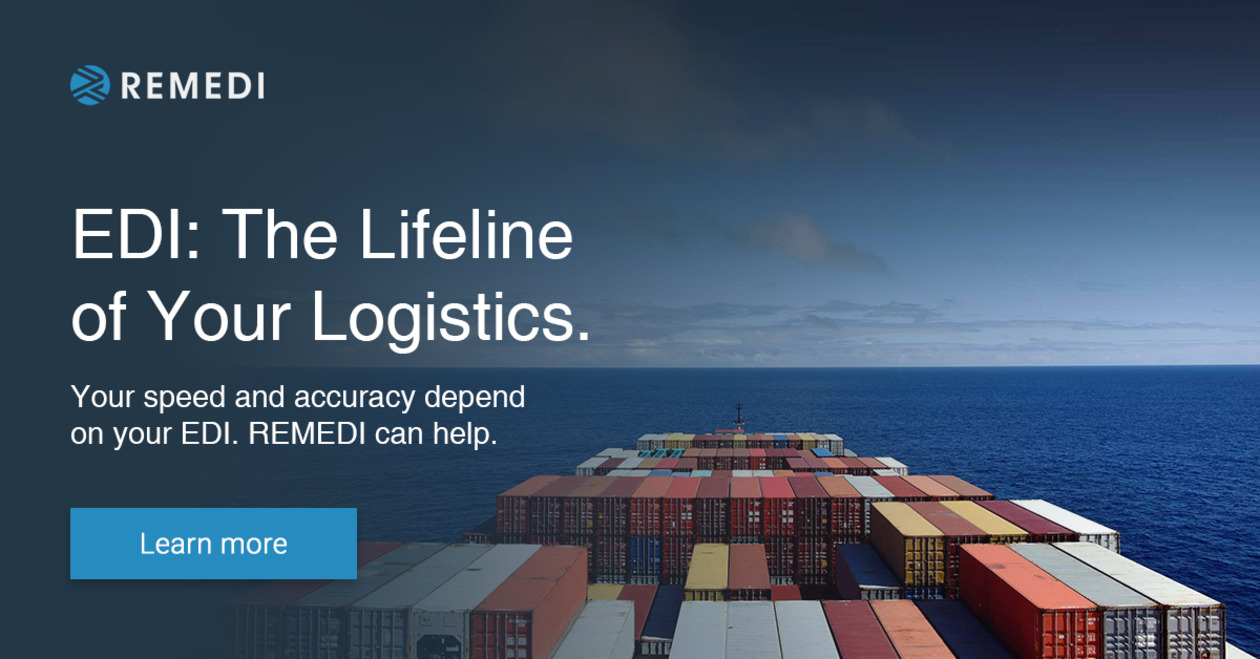
EDI is perhaps best thought of as a digital language used to electronically communicate information previously conveyed on paper. For the railway freight industry, this includes such items as bills of lading, rail shipping instructions and equipment tracking documentation. Because EDI uses standard document formats, or transaction sets, to define the order of information in any given document, it enables rapid, accurate data sharing. This is particularly valuable for the railway freight sector, which relies on the transmission of large amounts of frequently repetitive forms.
How EDI for Railway Freight Works
Despite having been introduced decades ago, EDI is still very much a must-use technology, and this is particularly the case for railway freight. With its constant movement of huge volumes of goods to and from numerous points along the supply chain, the sector is an excellent fit for the standardization, privacy, and automation of EDI.
Rail carriers are expected to provide their customers with various notices regarding purchased cargo, including shipment status updates. These generally comprise cargo origination and destination addresses, estimated delivery dates and times, notices of delays, and more. Without EDI, the modern railway freight firm might send this information in a document -- in a format and style of its choosing -- via email or even traditional mail. For the process to move to the next step, all the information would need to be received by a human being, opened, read and verified, and then transferred to the customer company's back-office systems.
It is an arduous and time-consuming set-up and one that EDI simplifies enormously. The technology automates all of these transactions in a standardized, known format, and the whole process happens almost instantaneously -- without any human intervention.
Questions about EDI integration and consulting? Ask me anything.
The Remedi AI Assistant may make mistakes. Please contact us with questions.
EDI Standards and Rail Industry Guidelines

As mentioned previously, EDI uses standardized formats to ease the reading and understanding of documents by trading-partner computers. These formats let the computers know what is contained in each line of data. Without them, speedy international commerce using railways freight would be virtually impossible, as senders and receiver computers might not "speak" a common data-format language.
EDI Standards in Use Today
Globally, several EDI standards are used today, but the most common four are ASC X12, UN/EDIFACT, TRADACOMS and ODETTE. Each standard has many different versions (i.e., EDIFACT version D12, Release A), so when trading partners agree to work together and use EDI, they must first land on a specific format.
ASC X12
ASC X12 is the primary standard used in North America. Created by the American National Standards Institute in the late 1970s with the goal of developing a universal messaging format for EDI, it is now used in other countries as well. Following extensive review processes every three to five years, ANSI adopts a new ASC X12 version.
UN/EDIFACT
UN/EDIFACT is the global EDI standard developed by the United Nations in the 1980s. It is widely employed in Europe.
TRADACOMS
TRAding DAA COMmunicationS, more commonly known by the abbreviation TRADACOMS, is the main standard for domestic commerce in the United Kingdom. Designed in the early 1980s, it is a precursor to UN/EDIFACT that was maintained by GS1 UK (formerly the UK Article Numbering Association). As with EDIFACT, each TRADACOMS message is assigned a six-letter reference code.
ODETTE
ODETTE (Organization for Data Exchange by Tele Transmission in Europe) is the established EDI standard of the European automotive industry. It allows for digitally signed receipts upon document receipt.
The Rail Industry Guidelines
The Rail Industry Guidelines regulate all commerce-related data transmitted between railroads and their suppliers. In the U.S. these are a compliant subset of ASC X12, designed to ease the widespread use of EDI applications in the railway freight sector.
With a specific focus on the section of the standards relevant to rail, the guidelines abbreviate X12 transactions for increased readability. They are maintained by an industry group composed of Class I and Class II railroad representatives. (The classes designate company size in accordance with criteria overseen by the Surface Transportation Board, a federal agency.)
EDI 410: Rail Carrier Freight Details and Invoice

The EDI 410 Rail Carrier Freight Details and Invoice is a transaction set of X12 that lays out the contents of the Rail Carrier Freight Details and Invoice Transaction Set (410) for EDI. Provided by a railway freight carrier, it can be used to give details to the customer about rail-movement charges, including:
- Carrier’s invoice
- Equipment details
- Origin and destination information
- Cargo manifest
- Rate and other charges
- Quantity and weight of shipped items
Why Choose Railway Freight EDI
Using railway freight EDI offers freight rail companies numerous benefits. These include, in the main:
- Reduced costs: EDI automates much of the work that would otherwise need to be done by human employees, freeing up those workers' time for higher-level, revenue-generating tasks. It also eliminates the need for large quantities of paper, the costs of which add up quickly for busy railway freight companies.
- Increased productivity: This automation capability can increase a railway freight company's productivity by an order of magnitude. With EDI for freight rail, employees are no longer bogged down by time-consuming, monotonous data entry. They can do other work they enjoy more and therefore get more done.
- Improved accuracy: Manual processes are inherently error-prone. EDI technology replaces them on many tasks, making the data that gets transmitted far more accurate.
Conclusion
EDI has transformed the railway freight industry for the better, making communication between trading partners faster and more accurate and helping goods arrive at their destinations on-time. Through the automation of cargo-related data entry and the establishment and continual updating of standardized formats designed to smooth intercompany transactions, EDI continues to be the best way forward for freight rail companies looking to remain relevant and competitive in the market.
Accommodating high volumes as part of your growth shouldn't mean compromising on speed or accuracy. Learn how Remedi can help.



